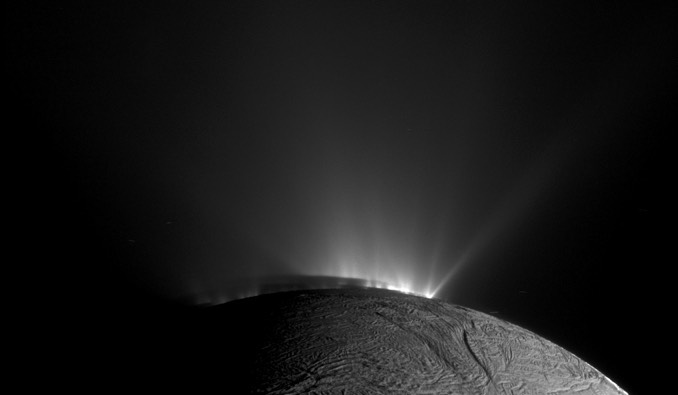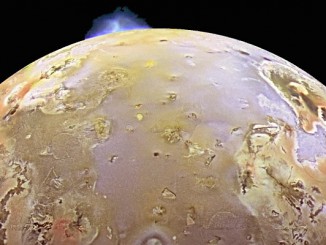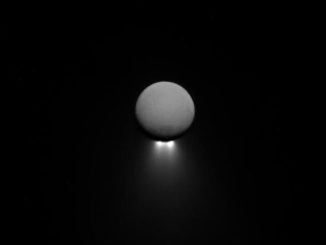
Archived data from NASA’s Cassini Saturn orbiter has revealed the presence of complex organic molecules spewing into space from geysers erupting through cracks in the frozen crust of the small moon Enceladus, the strongest evidence yet that a sub-surface ocean could be a habitable environment.
Frank Postberg and Nozair Khawaja, both of the University of Heidelberg in Germany, led a team that identified fragments of large organic molecules in ice grains that were released in geysers that feed material into one of Saturn’s rings. Cassini photographed those geysers and even flew through them before its mission ended last September.
“It is the first ever detection of complex organics coming from an extraterrestrial water-world,” Postberg said. Added Khawaja: “We found large molecular fragments that show structures typical for very complex organic molecules.”
“These huge molecules contain a complex network often built from hundreds of atoms of carbon, hydrogen, oxygen and likely nitrogen that form ring-shaped and chain-like substructures,” he said.
The ice grains hit Cassini’s instruments at a relative velocity of 30,000 kph (18,600 mph), breaking up larger molecules, possibly with thousands of atomic mass units, and producing organic fragments of up to 200 units of molecular mass.
Such large organic molecules can only be formed in complex chemical processes, including those related to the development of life as it is known on Earth.
While it’s possible the material originated elsewhere in the solar system and was deposited on Enceladus via impacts over the life of the solar system, Postberg and Khawaja are convinced it came from Enceladus’ deep interior where hydrothermal vents are thought to dot the unseen ocean’s floor.

“In my opinion the fragments we found are of hydrothermal origin, having been processed inside the hydrothermally active core of Enceladus,” Postberg said. “In the high pressures and warm temperatures we expect there, it is possible that complex organic molecules can arise.”
In the depths of Earth’s oceans where hydrothermal vents serve as hot spots supporting a wide variety of organisms, organic compounds can accumulate on rising air bubbles, reaching the surface and dispersing in sea spray when the bubbles burst.
A similar process could be going on beneath Enceladus’ crust with gas bubbles rising to the top of the presumed ocean and bursting, dispersing organics and salty water that freezes as it works its way to the surface and is ejected in huge geysers.



